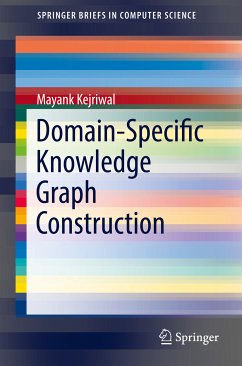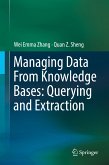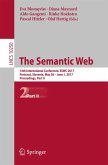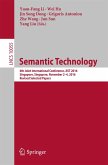The book describes a timely topic for both early -and mid-career researchers. Every year, more papers continue to be published on knowledge graph construction, especially for difficult Web domains. This book serves as a useful reference, as well as an accessible but rigorous overview of this body of work. The book presents interdisciplinary connections when possible to engage researchers looking for new ideas or synergies. The book also appeals to practitioners in industry and data scientists since it has chapters on both data collection, as well as a chapter on querying and off-the-shelf implementations.
Dieser Download kann aus rechtlichen Gründen nur mit Rechnungsadresse in A, B, BG, CY, CZ, D, DK, EW, E, FIN, F, GR, HR, H, IRL, I, LT, L, LR, M, NL, PL, P, R, S, SLO, SK ausgeliefert werden.









